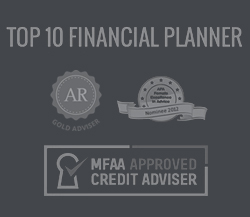In the same way finding a balanced lifestyle is conducive to good health, finding balance in an investment portfolio gives investors the healthiest chance of achieving their long-term goals.
Having a diversified mix of assets is essential because it mitigates market volatility and reduces portfolio risk. This is because the best performing asset one year can be the worst-performing the next.
Take for example cash – in FY22, a year marked by economic uncertainty and geopolitical conflicts, cash topped the list as generating the best returns at 0.1 per cent. The last time cash was king however was more than 10 years ago during the Great Financial Crisis.
Conversely, the worst performing asset in FY22 was Australian listed property returning -12.3 per cent. A year before, it was amongst the best performing asset classes with 33.2 per cent.
What’s clear from these returns is that markets are impossible to predict; past performance does not guarantee future performance. So, one of the best thing investors can do to lessen this ambiguity is to simply diversify.
A dive into diversification
What does it mean to be diversified? A good place to start is to understand what it is not: that the more investments you own, the better diversified you are.
Investing in several shares from similar industries may reduce single-company risk, but it may not sufficiently protect you from sector downturns, nor does it let you capitalise on potentially stronger performance elsewhere.
Different asset classes have different risk/return characteristics, and as evidenced in the cash-property example earlier, generate different rates of return in any given year. Generally, shares and bonds move in different directions. During periods of equity market downturns for example, high-quality investment-grade bonds tend to act as a buffer to volatility and can cushion any dramatic falls in portfolio value.
Similarly, investing only locally or in one region carries limitations also. Politics, industries, and consumer sentiment vary widely by country, generating different rates of economic growth. Not investing internationally may cause investors to miss opportunities to temper domestic market swings, given global economies do not grow nor contract in sync.
A balanced allocation
Broadly speaking, there’s three risk/return profiles investors can choose to build a portfolio upon: conservative, balanced, or growth. Which allocation is best depends on an investor’s goals, time frame and age.
A conservative portfolio generally allocates the majority of money to less risky assets such as bonds, whereas a growth portfolio will preferences equities. Generally, the longer your investment horizon, the more risk you can take as short-term volatility tends to smooth out in the long-run; day-to-day market fluctuations therefore have little impact over the long-run.
An example of a balanced portfolio could consist of 50 per cent growth assets such as Australian Shares, International Shares and emerging markets, and 50 per cent income assets such as Australian fixed interest, International fixed income and cash.
The right way to rebalance
The combination of assets investors choose to include in their portfolio – known as their asset allocation – is one of the key determinants of investment returns and explains the majority of portfolio variability over time. Market timing and stock selection on the other hand have little impact on long-term performance.
Which is why sticking to the right asset allocation through periodic portfolio rebalancing, as life goals evolve and markets fluctuate, is important.
Say you’ve selected a balanced approach and for simplicity sake, are targeting a 50/50 split between shares and bonds, which no reinvestment of dividends or capital gains, no additional contributions nor factoring in investment costs and taxes.
You originally invest $1000 in a shares fund which buys you 20 units. You invest another $1000 in a bond fund, which similarly buys you 20 units.
Fast forward a few months and assume shares have performed strongly while bonds have been flat.
Which means the asset allocation is getting out of balance, away from your desired 50/50 split. From a returns perspective, this might seem positive but the market risk within the portfolio has edged higher than desirable for a balanced investor. This means you are now overweight in shares and taking on more risk than you may have first anticipated.
Rebalancing the portfolio backs to the 50/50 allocation is the logical remedy but many investors struggle to do it because it can seem counterintuitive to sell a well-performing asset to buy more of the under-performing asset. But keep in mind rebalancing is about managing risk and not maximising returns.
There’s no way of predicting if shares will continue to outperform or if they’ll tumble tomorrow – if they do, you might be losing more than you are comfortable with.
The benefits of ready-made portfolios
An alternative to building your own portfolio is to invest in Diversified funds or ETFs – akin to a ready-made investment portfolio aimed at providing long-term returns that match an investor’s desired level of risk.
Not only, as the name suggests, do Diversified funds and ETFs have in-built diversification across multiple asset classes and markets, they also reduce the transaction costs associated with investing in different assets as you simply invest in just one.
As these funds and ETFs are professionally managed, investors also benefit from the investment expertise and automatic periodic rebalancing.
Contact us today on Ph 1300 136 508 if you would like to talk about your portfolio.
An iteration of this article was first published in the ASX’s October newsletter.
Source: Vanguard
Reproduced with permission of Vanguard Investments Australia Ltd
Vanguard Investments Australia Ltd (ABN 72 072 881 086 / AFS Licence 227263) is the product issuer. We have not taken yours and your clients’ circumstances into account when preparing this material so it may not be applicable to the particular situation you are considering. You should consider your circumstances and our Product Disclosure Statement (PDS) or Prospectus before making any investment decision. You can access our PDS or Prospectus online or by calling us. This material was prepared in good faith and we accept no liability for any errors or omissions. Past performance is not an indication of future performance.
© 2022 Vanguard Investments Australia Ltd. All rights reserved.
Important:
Any information provided by the author detailed above is separate and external to our business and our Licensee. Neither our business nor our Licensee takes any responsibility for any action or any service provided by the author. Any links have been provided with permission for information purposes only and will take you to external websites, which are not connected to our company in any way. Note: Our company does not endorse and is not responsible for the accuracy of the contents/information contained within the linked site(s) accessible from this page.





